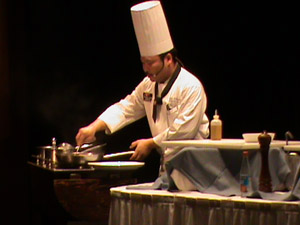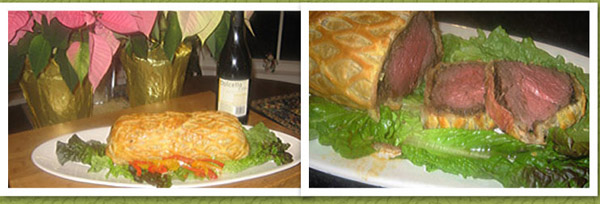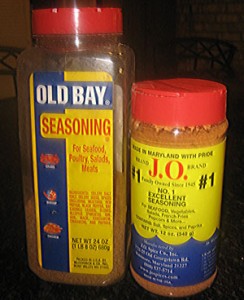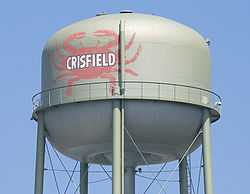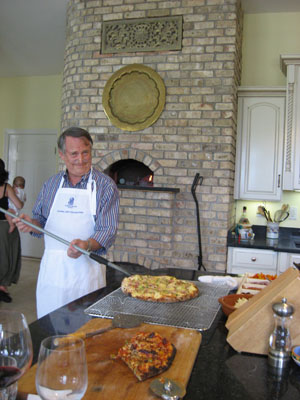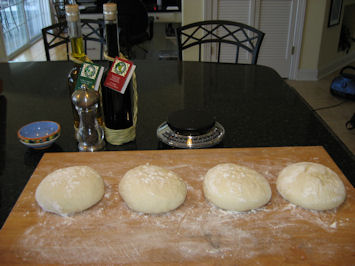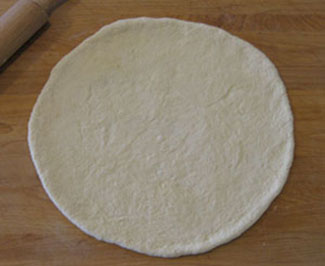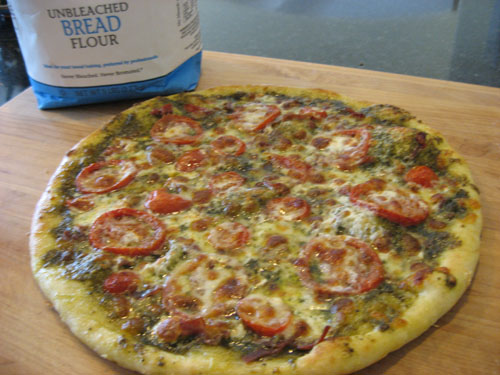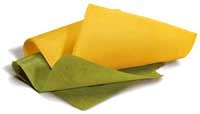 There are a few dishes than I can make with eyes closed and one hand tied behind my back. Lasagne is not one of them. My approach to this classic pasta dish requires two hands, blood, sweat and tears.
There are a few dishes than I can make with eyes closed and one hand tied behind my back. Lasagne is not one of them. My approach to this classic pasta dish requires two hands, blood, sweat and tears.
The features that make my version laborious and time-consuming are these: (1) the pasta sheets are home made with spinach added for color and authenticity. (2) In addition to the regular meat sauce I make a classic Bechamel sauce to add between pasta layers again out of respect for the original dish from Bologna, Italy, and (3) I am usually making a supply sufficient to feed 25 people. Twenty five is the average number of people attending our various family holiday dinners – Christmas, New Year, Easter, my saint’s Feast Day (December 15th), Arbor Day and so on.
For those of you who from time to time volunteer to serve up an eye-popping pasta course for the entire clan at Uncle Gino’s house on the Feast of San Gennaro this information is for you. I was the volunteer on duty for the 2010 Christmas dinner featuring the usual two main dishes. They are Beef Wellington and Lasagne Bolognese. The lasagne first course over the years has escalated in richness and complexity in an effort to produce something a little different each time while sticking to the original features. Calorie concerns go out the window especially when we take into account the premium French and Italian wines selected for the table by my wine-collecting brother-in-law Count Eduardo Krause Von Furstenburg.
 First, though, here you see the table setting ready to receive my signature pasta dish as a first course. Presiding over the event on the left is my sister the Countess Mariana Krause Von Furstenberg, last living heir to the Kingdom of Sardinia, and her daughter – my niece – the Princess Karabella. In the background is an oversize painting of our maternal grandmother Marietta and her daughter – i.e. our mom – Theodolinda, both of whom were no slouches when it came to making lasagne.
First, though, here you see the table setting ready to receive my signature pasta dish as a first course. Presiding over the event on the left is my sister the Countess Mariana Krause Von Furstenberg, last living heir to the Kingdom of Sardinia, and her daughter – my niece – the Princess Karabella. In the background is an oversize painting of our maternal grandmother Marietta and her daughter – i.e. our mom – Theodolinda, both of whom were no slouches when it came to making lasagne.
Getting down to business the dish is known in Italy by it’s official name, i.e. “Lasagne al Forno” which translates into “sheets of pasta baked in the oven.” In the U.S. and Italy thousands of variations abound whether in the cookbooks or the TV shows. However I claim that very few of them come close to the item served up in a Bolognese family dining room on major occasions. Doesn’t mean they don’t taste great. It only means they are departures from the original.
By the way spelling is to be noted. The proper spelling is lasagne with an “e” at the end, not lasagna which is what appears on 90 percent of menus in Italian-themed restaurants in the U.S. Lasagne is plural for pasta sheets which of course constitue the main ingredient.
If you’re interested the original it’s worth a try. The Italian Academy of Cuisine claims to have certified the true version and filed the recipe with the Bologna city government. My version adheres to the official Bolognese recipe downloaded from the Italian websites as closely as possible, but inevitably there are a few deviations of my own creation.
On this particular occasion one departure from the original was making the Bechamel sauce with truffle butter, an idea tossed out by my sister after watching Ina Garten do a pasta dish with it. The second was using a blend of three cheeses as part of the filling rather than just Parmesan as called for in the official Bolognese formula. The appearance of mozzarella and ricotta cheese in the thousands of other recipes floating around the world is a result of infiltration by Southern Italian cooks and their distant U.S. cousins all of whom are far more used to cooking baked pasta with those two cheese varieties as well as the Parmesan.
Before you embark on a project like this be aware that the trick is to cook the pasta sheets until just before they qualify as al dente, a step that requires a bit of practice since they will be cooked further in the oven. If you’re using the no-bake lasagne sheets from a box you don’t need to be concerned about that, but the result will be not what you expect. If you are using the regular commercial dry lasagne sheets with the annoying curly edges you will get a better result but still light years away from the recipes that call for freshly made pasta.
Grab your kitchen tools, grab the Pino Grigio and start on the journey that will lead you to a polite round of applause at the dinner table, if only for making the attempt. Fortunately a number of steps can be done ahead.
Extreme Lasagne
For 20-25 persons: (invite the neighbors if your family is not that big)
-
34 6×10 inch sheets home made or store-bought fresh spinach pasta (the actual dimensions are not critical)
-
1/2 gallon Bolognese meat sauce (see recipe at “Bolognese Sauce – Fact or Fiction?)
-
1 quart Bechamel sauce made with truffle butter (recipe below)
-
1 lb. shredded mozzarella (my family are a bunch of Southern Italians)
-
1/2 lb. shredded sharp provolone cheese (instead of ricotta for a far more richer flavor)
-
1/2 lb. grated imported Parmigiano Reggiano (not the stuff in the green can)
For the Bechamel:
-
3 oz. truffle butter (igourmet.com sells a 3 oz. container)
-
5 heaping tbsp. all purpose flour
-
pinch freshly grated nutmeg
-
6 cups or more warm milk
-
salt & pepper to taste
Melt the truffle butter in a sauce pan. Add the flour gradually while stirring to incorporate. Let cook for a minute or so until the flour is completely dissolved. Add the warm milk slowly while stirring constantly. This requires the dexterity of a professional magician. The milk tends to splatter all over the place. Add the nutmeg, salt and pepper and keep stirring at medium high heat until the mixture starts to thicken and bubble up. Lower heat to medium low. When the desired consistency is reached remove from the heat and place a sheet of plastic wrap over the mixture tucking it in so in comes in contact with the sauce. If you don’t do this the sauce will form an annoying skin on top thus requiring you to run the whole thing through a sieve or chinois. I hate that but it happens.
Check to see whether your local Italian deli has ready-made refrigerated spinach pasta. Some do. If so that’s a real time saver. Otherwise the pasta sheets can be done well ahead at home and preserved in gallon zip locks as long as they are not too damp and not longer than 10 inches so they’ll fit in the bag. Rub flour and cornmeal on both sides of each sheet before inserting into the bag, overlapping each sheet inside the bag like a deck of cards spread out over the poker table. Watch out for dog ears. Lie sheets nice and flat on the refrigerator shelf. They can be held for days.
The meat sauce can also be made ahead. It should be meaty and thick. If too thin it’s best to reduce it and then cool down before using it in the lasagne filling. The Bechamel can also be made in advance however in this case you want a relative thin consistency. On removing it from the refrigerator allow to reach room temperature and thin out with a little milk if necessary. If it looks and feels like pancake batter give yourself a high five.
The 3-cheese blend can also be done days ahead and refrigerated.
Preparation: Start with a Yoga session to steel your nerves and build confidence. Next have ready two 9×13 baking dishes. Bring 5 quarts water to a boil in a large pot. Meanwhile have all ingredients, meat sauce, Bechamel and cheeses standing by. Prepare an ice bath next to the pasta pot using another wide baking dish or oven pan filled halfway with water and kept cold with an ice brick (the kind you use in the picnic cooler).
When the water reaches a boil add 2 tbsp. salt and stir. Working with no more than 3 or 4 sheets at a time drop them in the boiling water and stir gently to prevent sticking. No need to add oil. It has no effect on sticking whatsoever despite the claims. After about 2 1/2 minutes, more if the sheets are very dry to start, remove them and drop them into the ice bath. Better to undercook than overcook. Shake off excess water and place them on a kitchen towel to drain before starting the layers in the baking dishes. Cover the bottom of the first baking dish first with meat sauce then start adding cooked pasta sheets to form the first layer. Top with Bechamel, cheese and additional sauce and repeat the process until the dish is nearly topped off. Do the same with the second baking dish making sure the top layer has sauce – just sauce and cheese, leaving out the bechamel.
At this point the baking dishes can be refrigerated. For serving, at around 2 hours ahead remove the baking dishes from the refrigerator and allow them to reach room temperature. Then place the dishes in the oven preheated to 350 degrees. Cook for 40 – 45 minutes or until the top layer just begins to bubble up and the cheese is starting to brown. Covering with a sheet of aluminum foil during cooking is ok as long as the foil does not touch the sauce and cheese top layer. For the final 10 minutes the foil should be uncovered. Remove from the oven and let everything cool till just warm to the touch.
Serve with additional sauce and grated Parmesan cheese on the side (the Italians don’t do any such thing but so what!) . Take a bow.
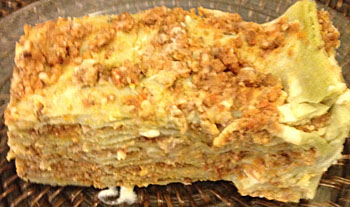

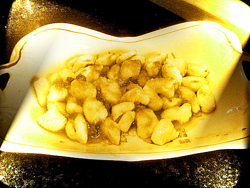 I know there are hundreds, maybe thousands of high profile dishes around the world whose correct pronunciation is possible only for native speakers of a language. However because “nokeys” seem to have become such a recurring featured item on the cooking shows and websites lately someone should blow the whistle.
I know there are hundreds, maybe thousands of high profile dishes around the world whose correct pronunciation is possible only for native speakers of a language. However because “nokeys” seem to have become such a recurring featured item on the cooking shows and websites lately someone should blow the whistle.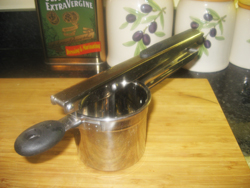 Second, the question is whether to mash the cooked and peeled potatoes with a food mill vs. a potato ricer. Again the Italian grandmas will opt for the potato ricer, known to them as a “schiacciapatate,” pictured on the left, because it breaks down the potato more evenly and smoothly than the ham-handed food mill. Having done it both ways I proudly side with the grandmoms even if the proof of a difference is lacking. The food mill is really a clumsy tool for this application anyway. Next, I find that mixing the flour and potatoes after the riced potatoes reach room temperature is a better choice, having tried the recipe with cold riced potatoes and being disappointed with the result. TV chef Anne Burrell recommends exactly the opposite, claiming that chilled riced potatoes absorb less flour and result in a tenderer dumpling. The logic escapes me. The more water that evaporates out of the potatoes the less flour that can be absorbed. Chilling the stuff actually retards evaporation and keeps the unwanted moisture in place.
Second, the question is whether to mash the cooked and peeled potatoes with a food mill vs. a potato ricer. Again the Italian grandmas will opt for the potato ricer, known to them as a “schiacciapatate,” pictured on the left, because it breaks down the potato more evenly and smoothly than the ham-handed food mill. Having done it both ways I proudly side with the grandmoms even if the proof of a difference is lacking. The food mill is really a clumsy tool for this application anyway. Next, I find that mixing the flour and potatoes after the riced potatoes reach room temperature is a better choice, having tried the recipe with cold riced potatoes and being disappointed with the result. TV chef Anne Burrell recommends exactly the opposite, claiming that chilled riced potatoes absorb less flour and result in a tenderer dumpling. The logic escapes me. The more water that evaporates out of the potatoes the less flour that can be absorbed. Chilling the stuff actually retards evaporation and keeps the unwanted moisture in place. You will do this by running the pieces over the tines of a fork with generously floured fingers thus forming the characteristic grooves you often find in the store-bought product. Or you can use a gnocchi board like the one pictured, thus forming not only grooves but a curled sea shell shape guaranteed to hold whatever sauce you put on it.
You will do this by running the pieces over the tines of a fork with generously floured fingers thus forming the characteristic grooves you often find in the store-bought product. Or you can use a gnocchi board like the one pictured, thus forming not only grooves but a curled sea shell shape guaranteed to hold whatever sauce you put on it. This most recent cruise took us around the Caribbean to ports that I had not previously visited – St. Thomas, St. Lucia, Grenada and a few others. It was an 11-day extravaganza with four of the 11 nights requiring me to squeeze into a tux that I bought when I was 20 pounds lighter. What prompts me to write about it however is not the locations we visited, all of which resemble one another and do not require a re-visit any time soon, but the outstanding performance by the catering and restaurant staff who managed to turn out culinary masterpieces at every meal.
This most recent cruise took us around the Caribbean to ports that I had not previously visited – St. Thomas, St. Lucia, Grenada and a few others. It was an 11-day extravaganza with four of the 11 nights requiring me to squeeze into a tux that I bought when I was 20 pounds lighter. What prompts me to write about it however is not the locations we visited, all of which resemble one another and do not require a re-visit any time soon, but the outstanding performance by the catering and restaurant staff who managed to turn out culinary masterpieces at every meal.